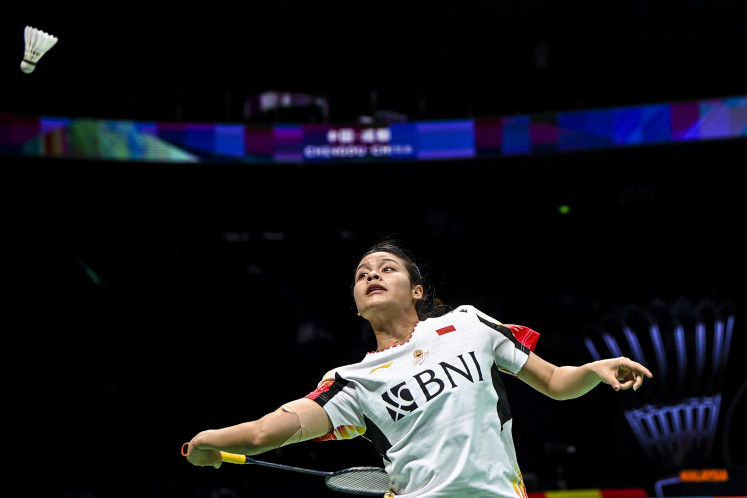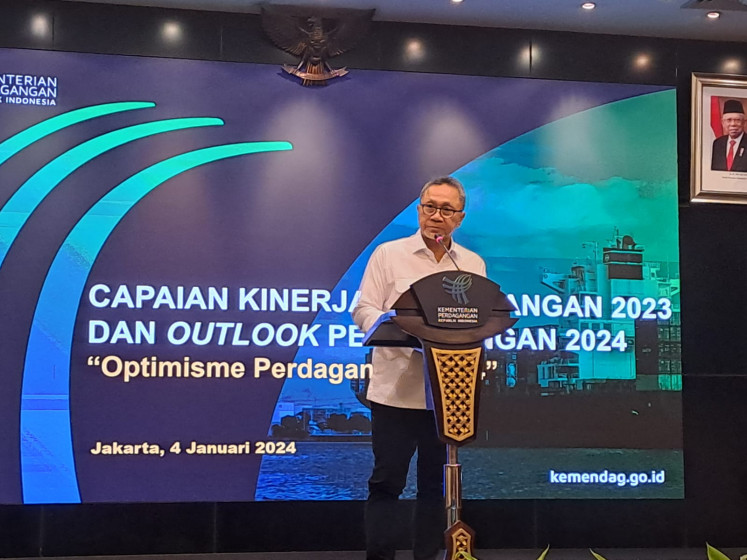Ken Pattern: Telling stories through pictures
Rice Paddies, Ubud (2014)After taking a poke at Singaporeâs ultra-modern and lofty Marina Bay Sands, Canadian artist Ken Pattern returns for his regular exhibition in Jakarta, presenting his latest work of images of trees and different kinds of expression
Change Size
 Rice Paddies, Ubud (2014) (2014)
Rice Paddies, Ubud (2014) (2014)
Rice Paddies, Ubud (2014)
After taking a poke at Singapore's ultra-modern and lofty Marina Bay Sands, Canadian artist Ken Pattern returns for his regular exhibition in Jakarta, presenting his latest work of images of trees and different kinds of expression.
A total of 168 prints and paintings are exhibited in his current show at the Four Seasons Hotel in South Jakarta, including his well known black and white stone lithographs of Jakarta streetscapes, as well as artwork from years back.
Of the dozens of artworks, some 37 are new and have never been shown ones. Standing out amongst them are works around the theme of banyan trees ' locally known as beringin.
Pattern said he had always been fascinated by and interested in banyan trees, which were ubiquitous and regarded spiritually in Indonesia, and in trees in general.

'The banyan tree is particularly interesting visually. The way it grows with its root system, creating multiple interconnected trunks, even though it is one,' Pattern said.
He said that whenever he was in Canada to do his work ' the artist splits his time between Indonesia and his homeland ' he enjoyed going to the forest to feast his eyes on the old growth trees.
'I like to joke that I think I was a tree in a previous life,' Pattern said with a smile.
The artist realized some of his new works through acrylic paint on canvas and also played with imagery, which he described as tracing a fine line between abstract and hyper-realist modes of expression.
'When I was working on the banyan paintings, for example, during one stage of the work I was only dealing with colors, no detail. I took a picture of the ongoing work because I thought there was something there that gave me an idea to do another painting,' he said.

Showroom (Courtesy of Ken Patten)
'The inspired painting was not actually an abstract one, but it was definitely not realism. I spend one to two months to make a painting, working on different stages, recording and making notes along the way, which lead me to something else. That's always interesting for me.'
Pattern said that he felt he was not so much an artist, but an observer, documenter, writer and composer.
'I compose pictures; there's always a storyline and a very strong narrative in my work. I write interesting stories that make sense to people through pictures,' he said.
Pattern found his calling in art in the 1970s after working to create posters and displays for an environmental group in Canada.
He then pursued the fine art aspect of the craft before working for a few years at a Canadian governmental agency and saving to work on his passion. He held his first exhibition in 1978, featuring pencil drawings and acrylic paintings.
Pattern and his wife Helen ended up in Jakarta by chance after she was offered a short-term contract with an aid project in 1988. They have been in the Big Durian ever since.
In 1990, Pattern began working around the theme of typical intimate Jakarta street and neighborhood scenes, which he later realized was work documenting a social heritage that was pushed to the brink of extinction by globalization and modernism.
When asked about his thematic arc in art, Pattern said that he had always been dealing with a simple theme about maintaining some kind of balance between human beings and nature and the contrast in the world.
'My main concerns are about the conflict between humans and nature and the inequality between people. Nature is not there for us to control, but to be in harmony with. We must be in balance with nature and all the creatures that live within it. The loss of habitat for monetary gain will lead to the destruction of our environment and the extinction of | species.'
True to his word, also part of the exhibition, which runs until Dec. 28, is a poster depicting an orangutan in its destroyed habitat and all proceeds from the poster will be donated to an animal rights group.









